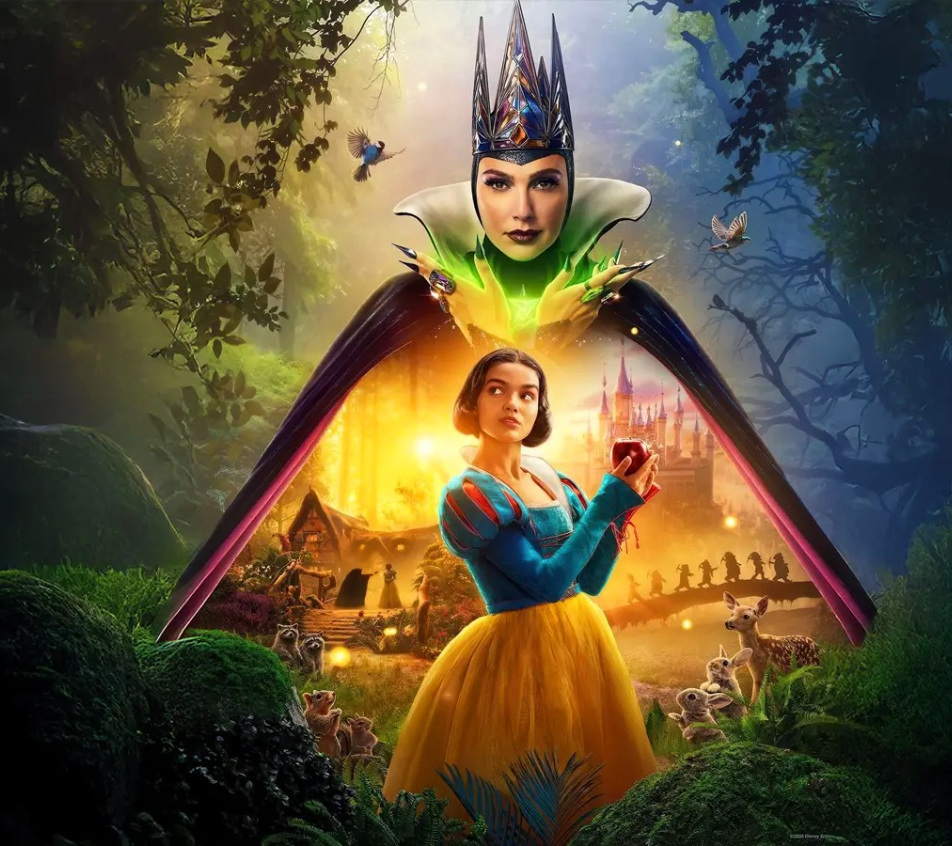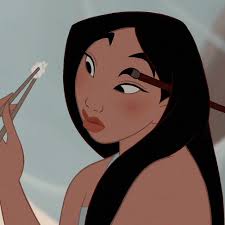
Film Critic Cassandra Fong finds Snow White to be surprisingly good, despite its flaws
Images by
Agency Cultural de Lima on Facebook
Once upon a very hyped time, Disney decided to awaken its first princess from the vault. Snow White (2025), helmed by Marc Webb, is a lush, visually ambitious reimagining of the 1937 classic. In an era of remakes, reboots, and re-whatevers, this one had the heaviest crown to wear. After all, Snow White was the OG of Disney royalty. So, how did this fairytale fare?
Gal Gadot is the crown jewel of the chaos
Let’s start with Rachel Zegler, because honestly, where else could we start? From her very first scene, Zegler exudes the kind of star power that’s rare — the kind that makes you lean forward in your seat, wondering how someone can be that ethereal and still feel grounded. Her Snow White is no soft-spoken songbird waiting for a prince; she’s thoughtful, curious, and propelled by a quiet strength. Zegler doesn’t shout to prove her modernity — she lets it seep through her posture, her pauses, and her wide-eyed empathy. Her voice, rich and velvety, carries the musical numbers with effortless grace, and it’s no stretch to say that some of the film’s most memorable moments hinge entirely on her vocal charisma.
Gone is the squeaky-voiced, pie-baking pushover from 1937. This Snow White’s got a mission — and it’s not waiting around for a man to kiss her. Zegler’s version is thoughtful, principled, and totally fed up with royal corruption. After being cast aside by her stepmother (more on that juicy mess later), she escapes into exile not to hide, but to regroup. By the third act, she’s literally storming the castle and calling the shots. Girlboss? Maybe. Icon? Absolutely.
Now, onto the crown jewel of the chaos — Gal Gadot’s Evil Queen. Oh boy.
She enters the movie like a Vogue cover come to life — all cheekbones, drama, and couture capes that deserve their own IMDb credits. Visually, Gadot is perfection: you believe this woman would order a hit on her stepdaughter for being slightly prettier. But once the script demands anything beyond a snarl and a strut, things start to unravel.
Gadot’s big villain number, “All is Fair,” arrives with smoke, mirrors, and enough Swarovski crystals to blind a horse, but sadly, not much vocal firepower. While she delivers it with her trademark intensity, the vocals feel undercooked and tentative — less Broadway diva, more karaoke night at the evil lair. And while her wardrobe could shut down Paris Fashion Week, it’s so over-the-top it borders on parody. At one point, she’s wearing a headpiece so massive it looks like it might launch her into orbit. Stunning, yes. Scary? Not quite.
That said, there’s something undeniably compelling about Gadot’s Queen — not as a villain, but as a metaphor. Her obsession with youth and beauty is reframed as a slow-burn descent into paranoia and self-loathing. It’s not subtle, but it adds just enough texture to keep her from being pure caricature.
Much has already been written about the dwarfs — and no, they aren’t what you remember. The choice to go full CGI for the seven companions has sparked more backlash than a poisoned apple at a fruit stand. They are, in a word, odd. Visually jarring and strangely under-characterised, they hover in an uncanny valley between realism and cartoonishness that makes it hard to care about them as individuals. For a film that preaches inclusion and progression, the decision to digitally replicate one of its most beloved ensembles feels like a step backward — or at least sideways.
Still, the film doesn’t skimp on the glamour. Sandy Powell’s costume design is opulent to the point of opulence overload. Snow White’s dresses, particularly in the second half, are sumptuous — regal without being impractical, and delicately embroidered with symbolic flourishes. But while Zegler’s wardrobe reflects her character’s evolution, the rest of the design sometimes feels more “fashion show finale” than fairytale function. It’s beautiful to look at, sure — but you might find yourself wondering how the Queen managed to do anything sinister while wearing forty pounds of velvet and sequins.
And then there’s the forest. Oh, the forest — so digitally dreamlike it might as well be an AI hallucination. Gone is the tactile, hand-drawn charm of the original’s woodland world. In its place is a shimmering CGI landscape that feels less like a place you’d run away to, and more like a background you’d swipe past in a video game. It’s technically impressive, but emotionally distant — a problem that plagues more than just the scenery.
Zegler handles the new material with aplomb
The music, courtesy of Broadway darlings Benj Pasek and Justin Paul, adds a few fresh numbers to the mix, though none quite match the earworm power of the original’s “Heigh-Ho” or “Someday My Prince Will Come.” Zegler handles the new material with aplomb, elevating melodies that might otherwise get lost in the glitz. Gadot, again, gives her all — but her vocal limitations become hard to ignore when juxtaposed with Zegler’s effortless tone. It’s not that Gadot can’t sing; it’s that the material seems mismatched with her range and persona, leaving her signature villain number feeling more like a school recital than a showstopper.
No live-action Disney remake is complete without a side of controversy, and Snow White is no exception. The film’s heavy-handed modern messaging has divided audiences. Some applaud the feminist spin and inclusive casting, while others see it as a clumsy rewrite that strips the story of its original magic. Disability advocates have rightly criticised the decision to replace the dwarfs with CGI, calling it erasure.
Meanwhile, Gadot and Zegler’s outspoken political views have made the film a lightning rod for online debates, with some fans boycotting simply because they don’t agree with either one. Whether you love or hate the new direction, Snow White 2025 is a lightning rod for cultural arguments, proving once again that Disney’s attempts to “update” classics can be as divisive as they are dazzling.
Verdict:
Would the original Snow White recognize herself in this version? Maybe not. But she’d probably admire the ambition. And with Zegler in the titular role, she’d know the heart of the story is still beating — even if it skipped a few notes along the way. 6/10
Poisoned Apple: Why Disney Should Have Left Snow White Alone

Comments